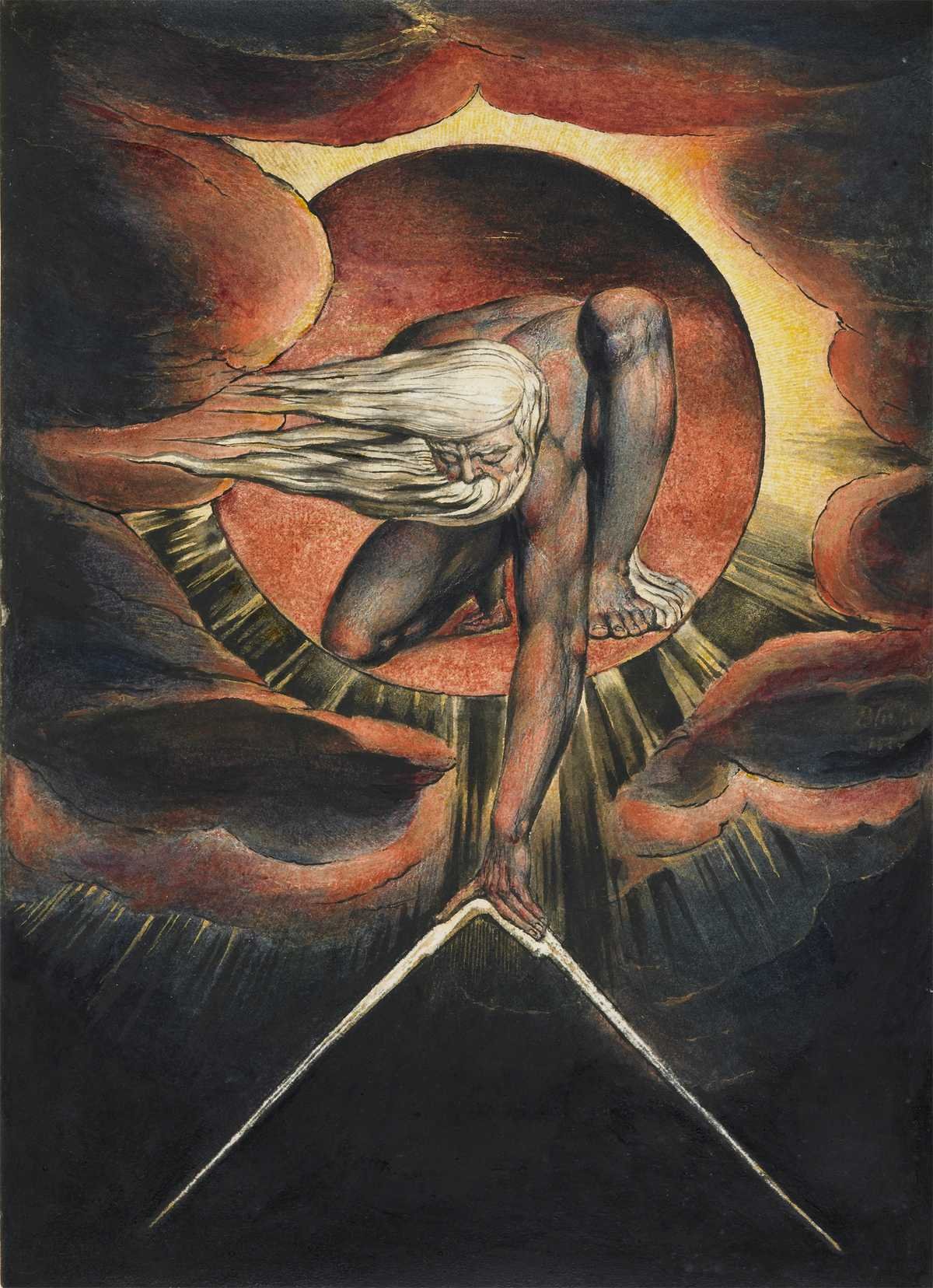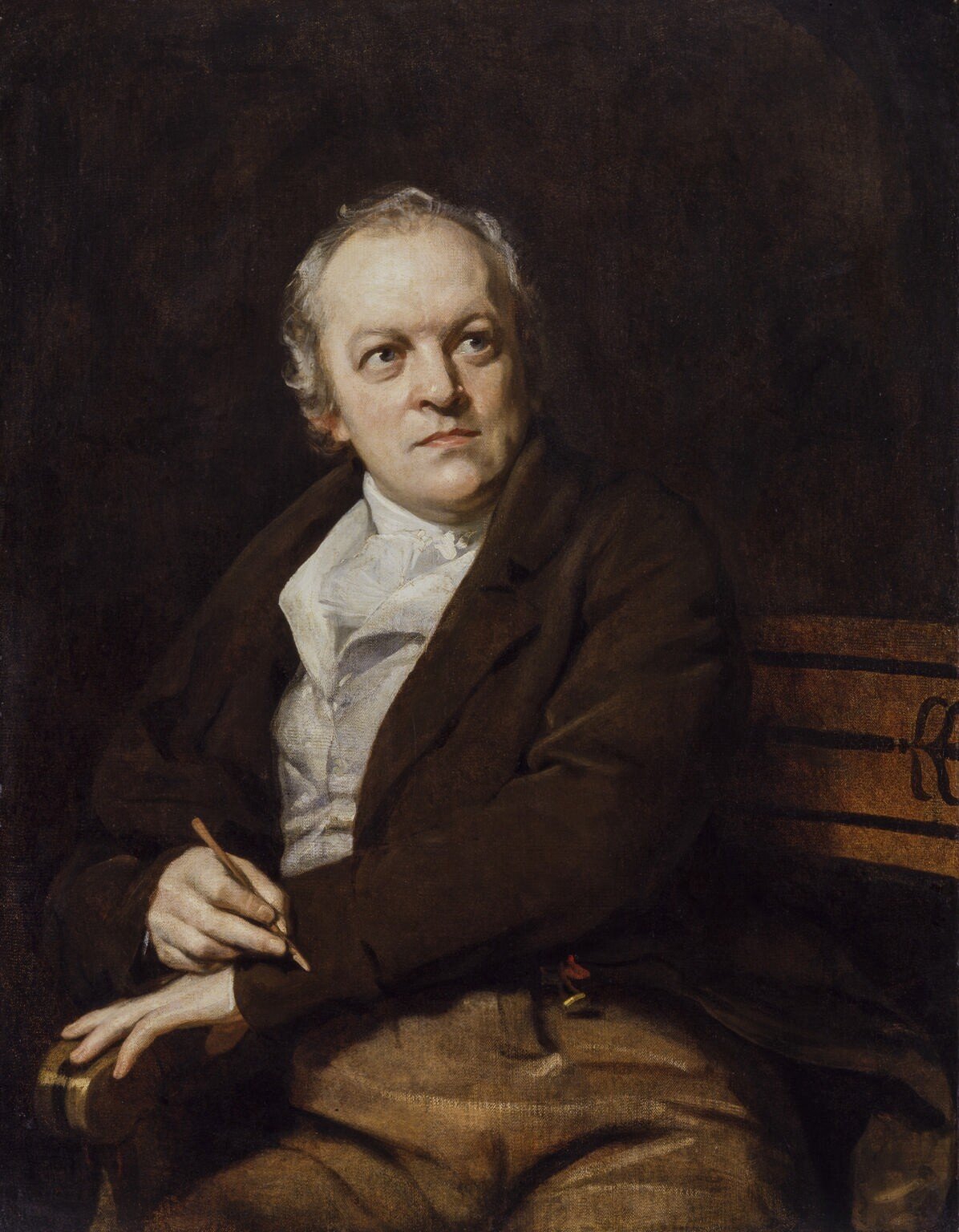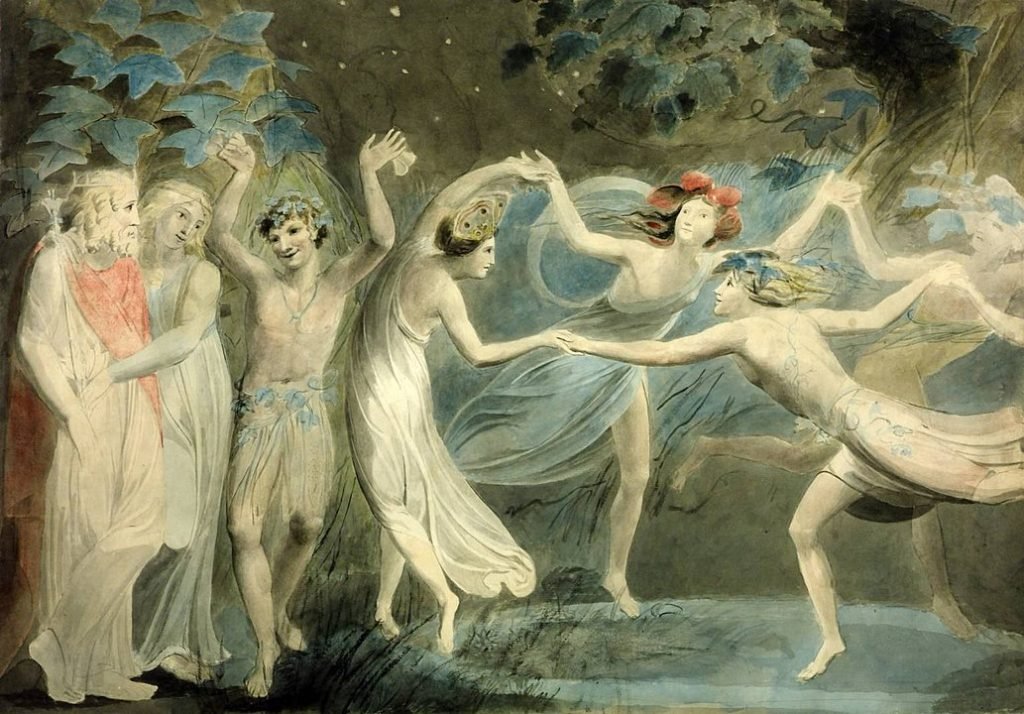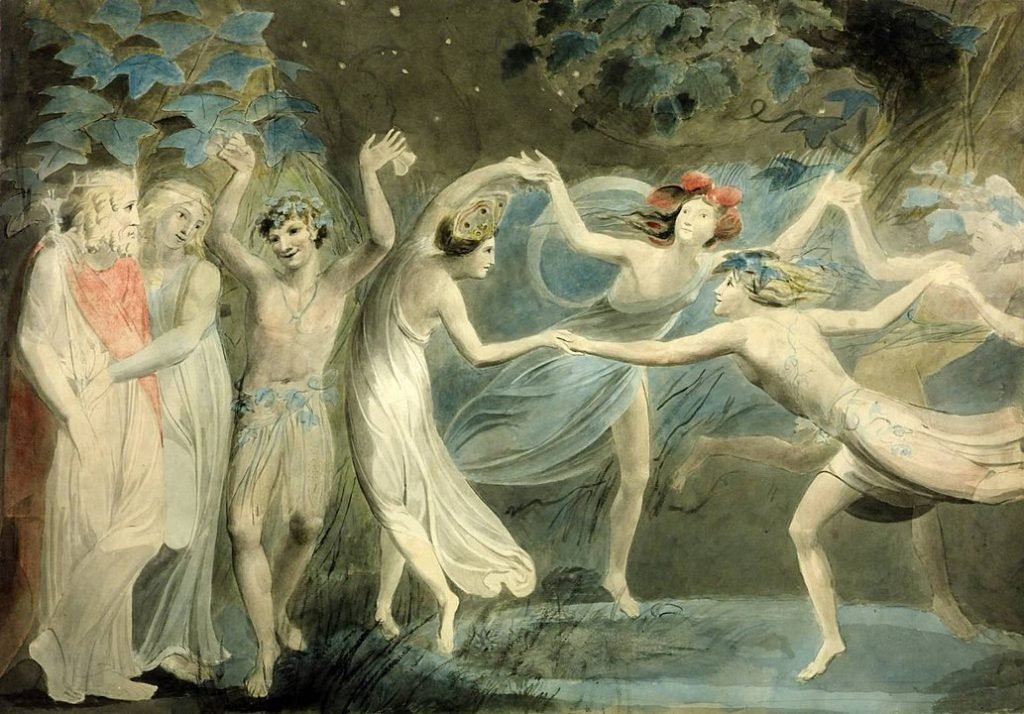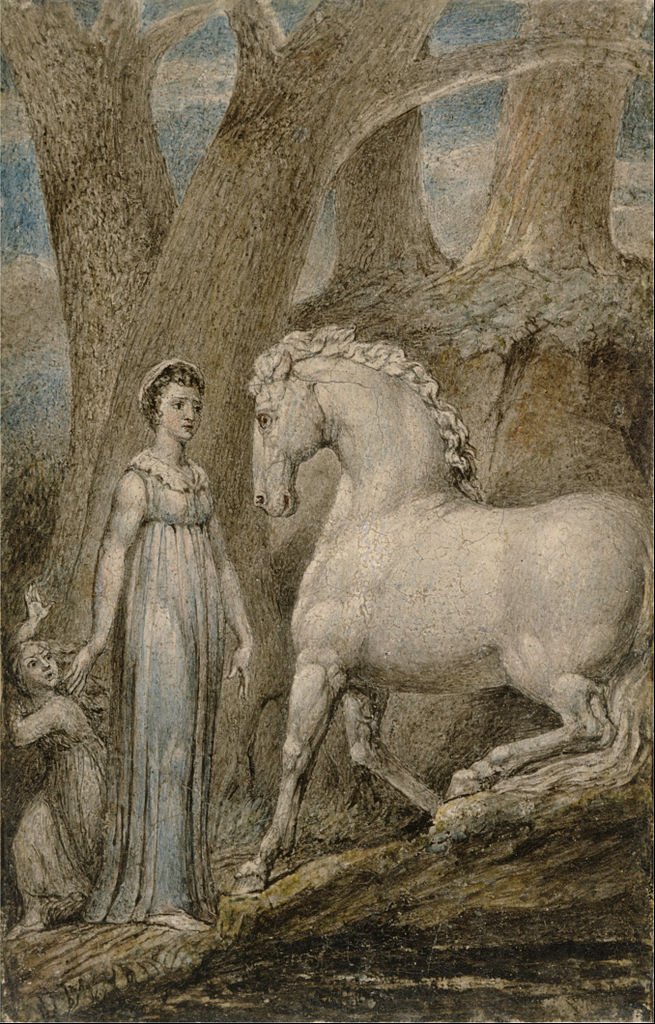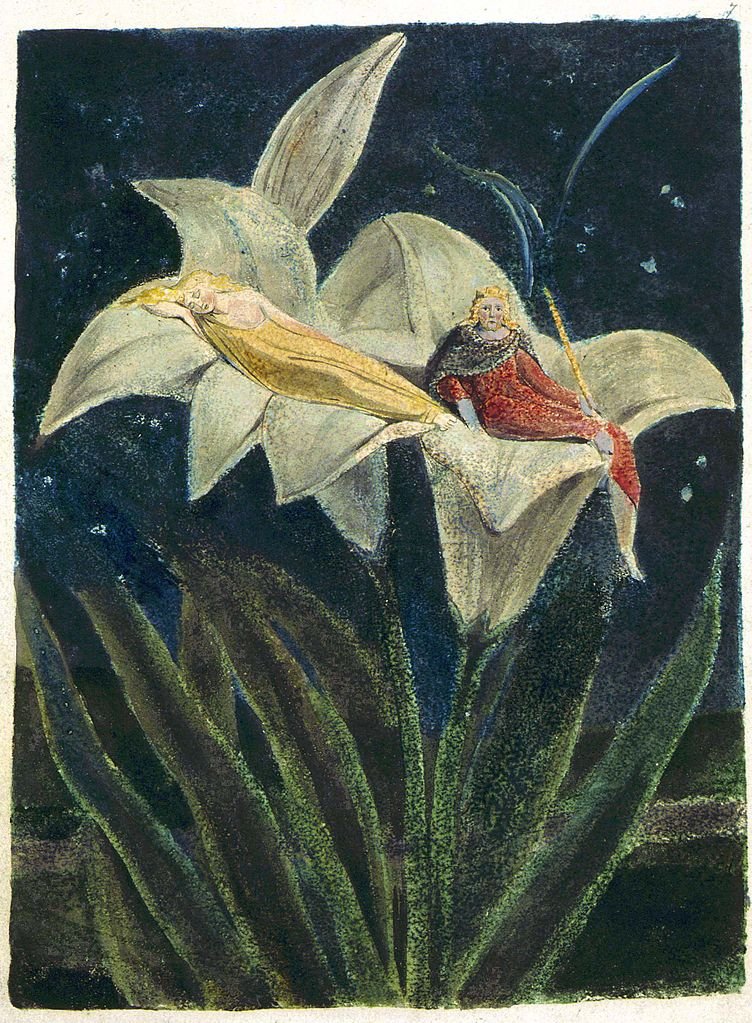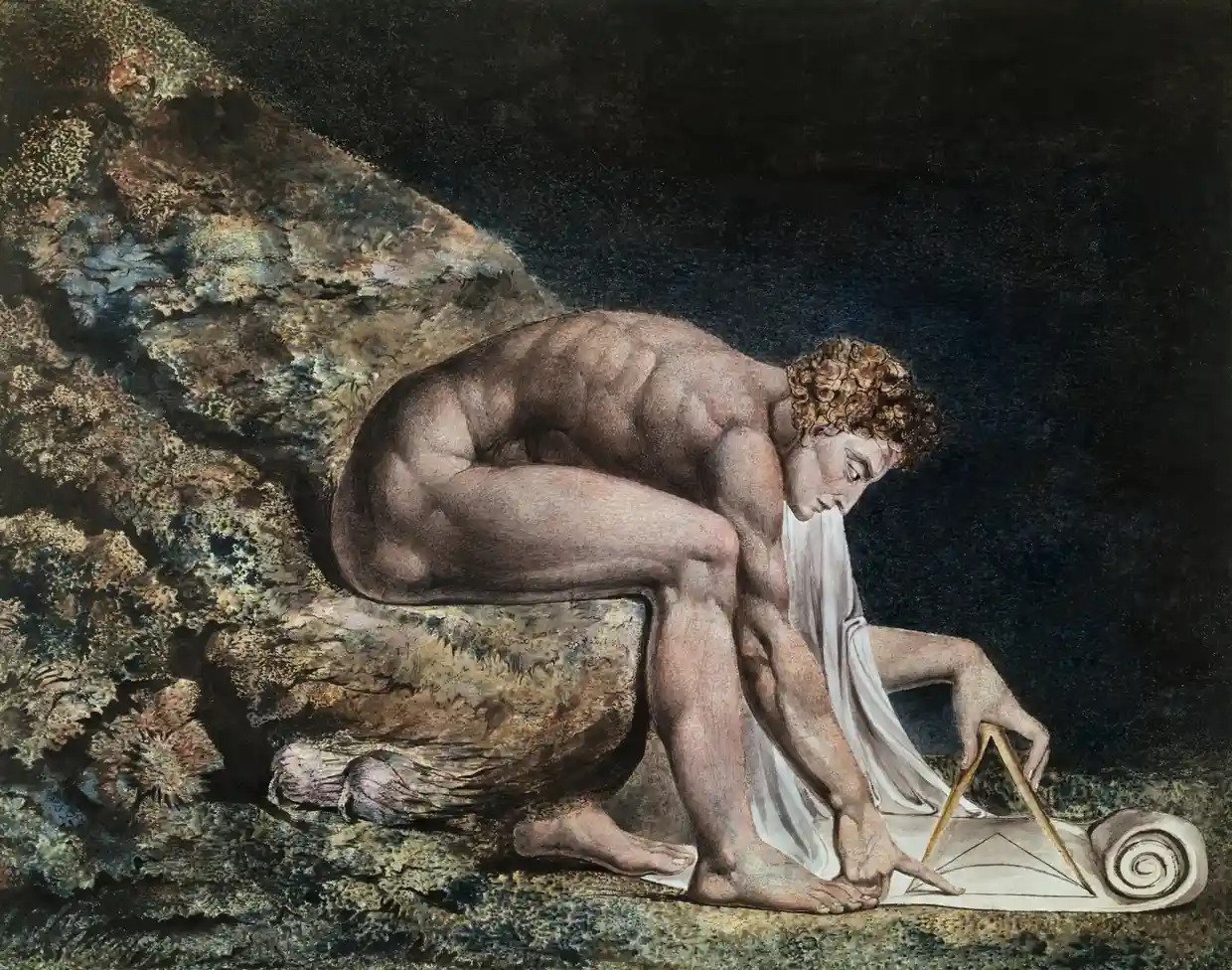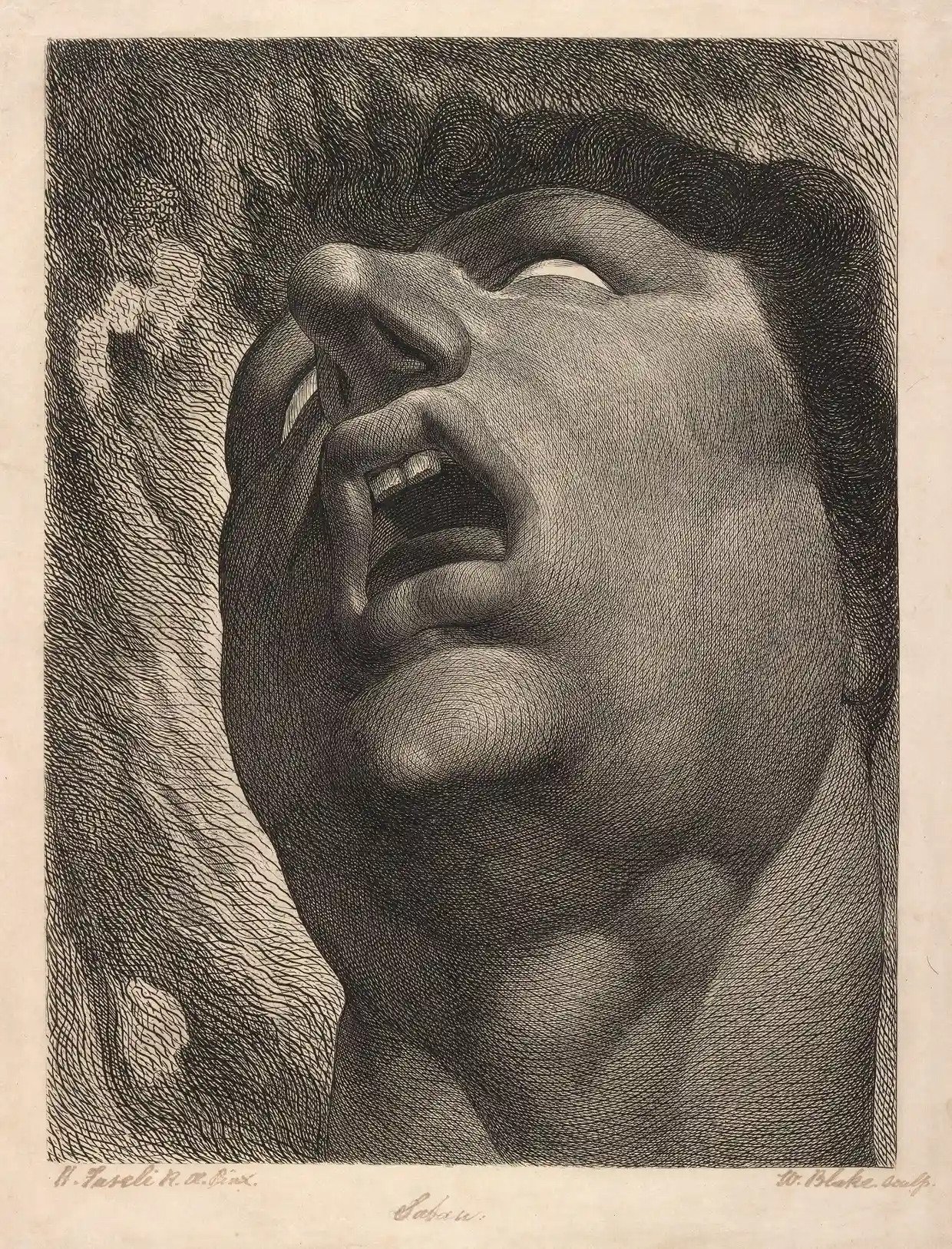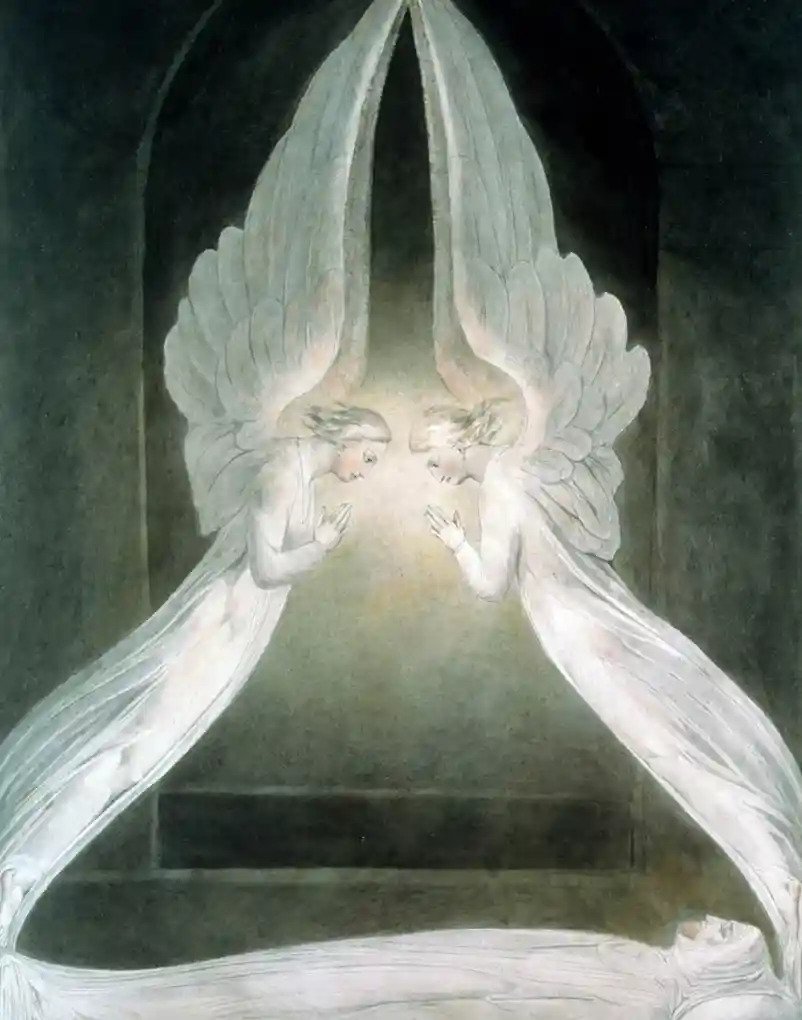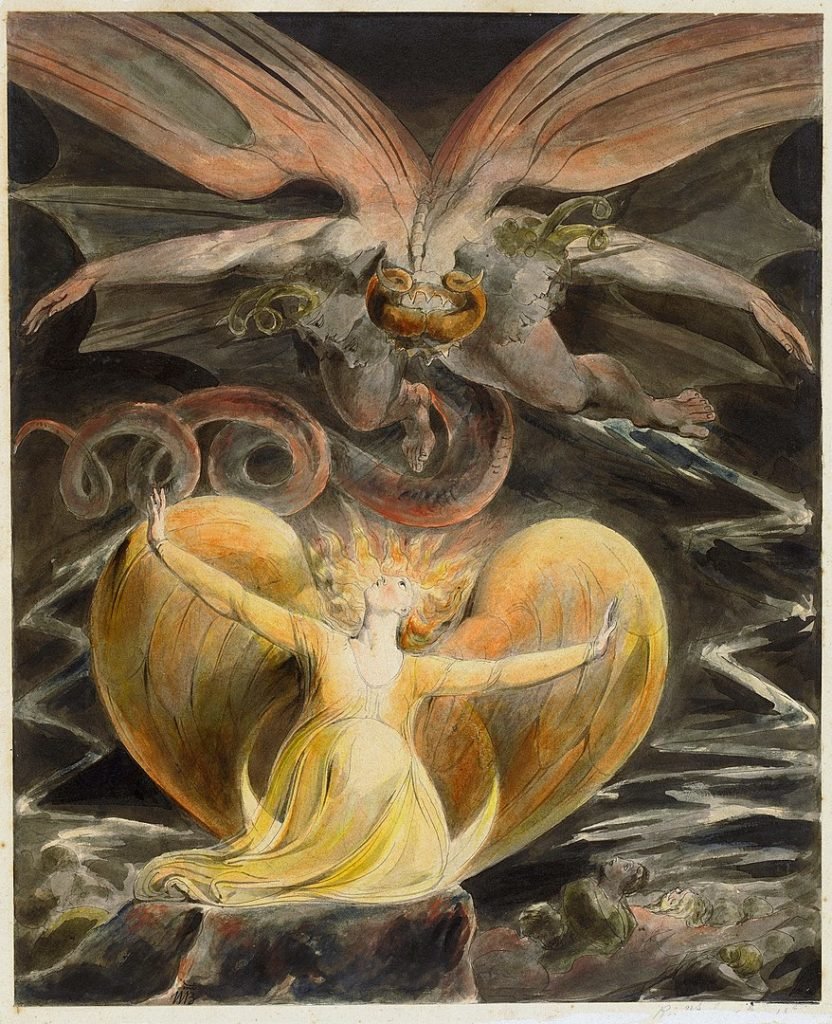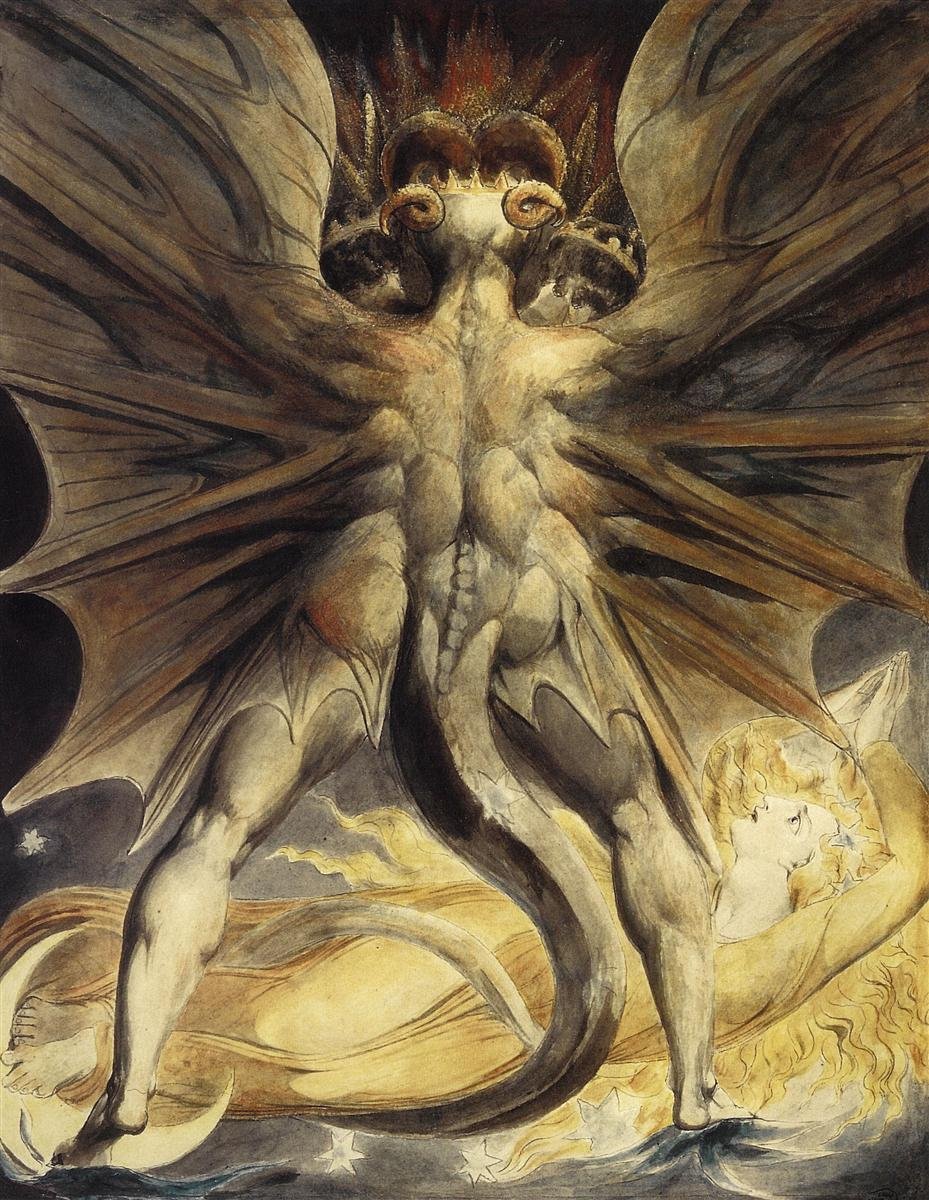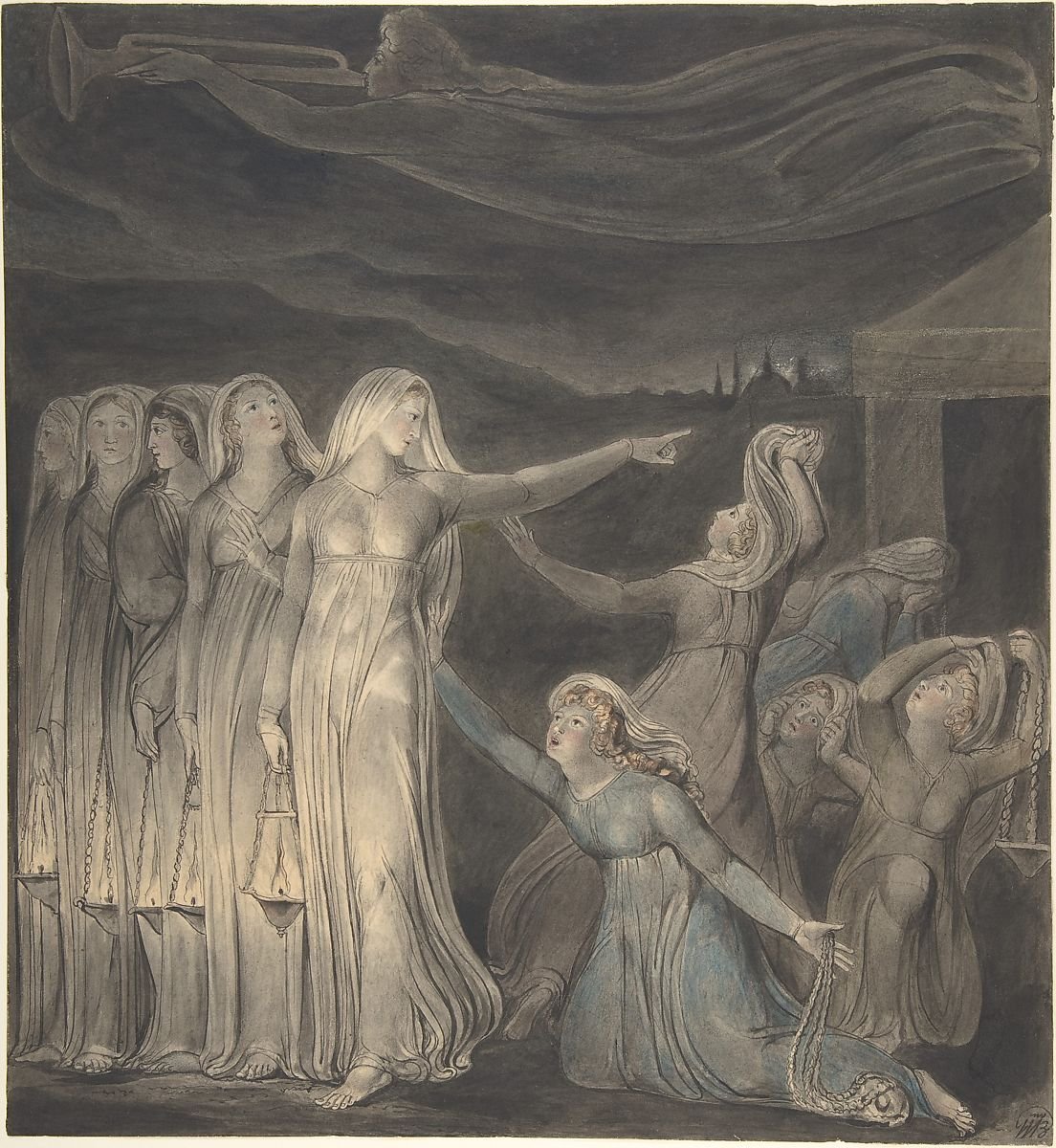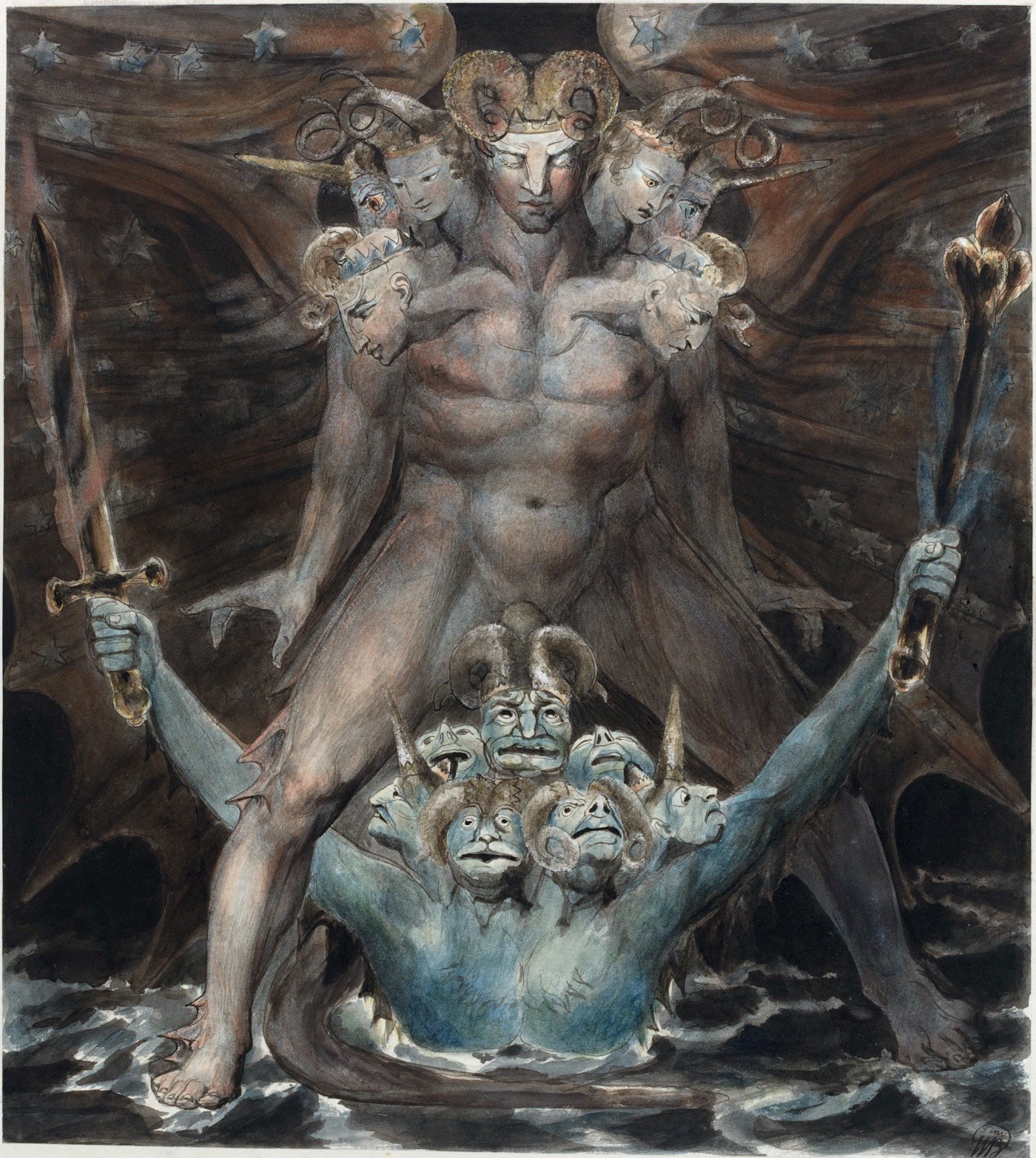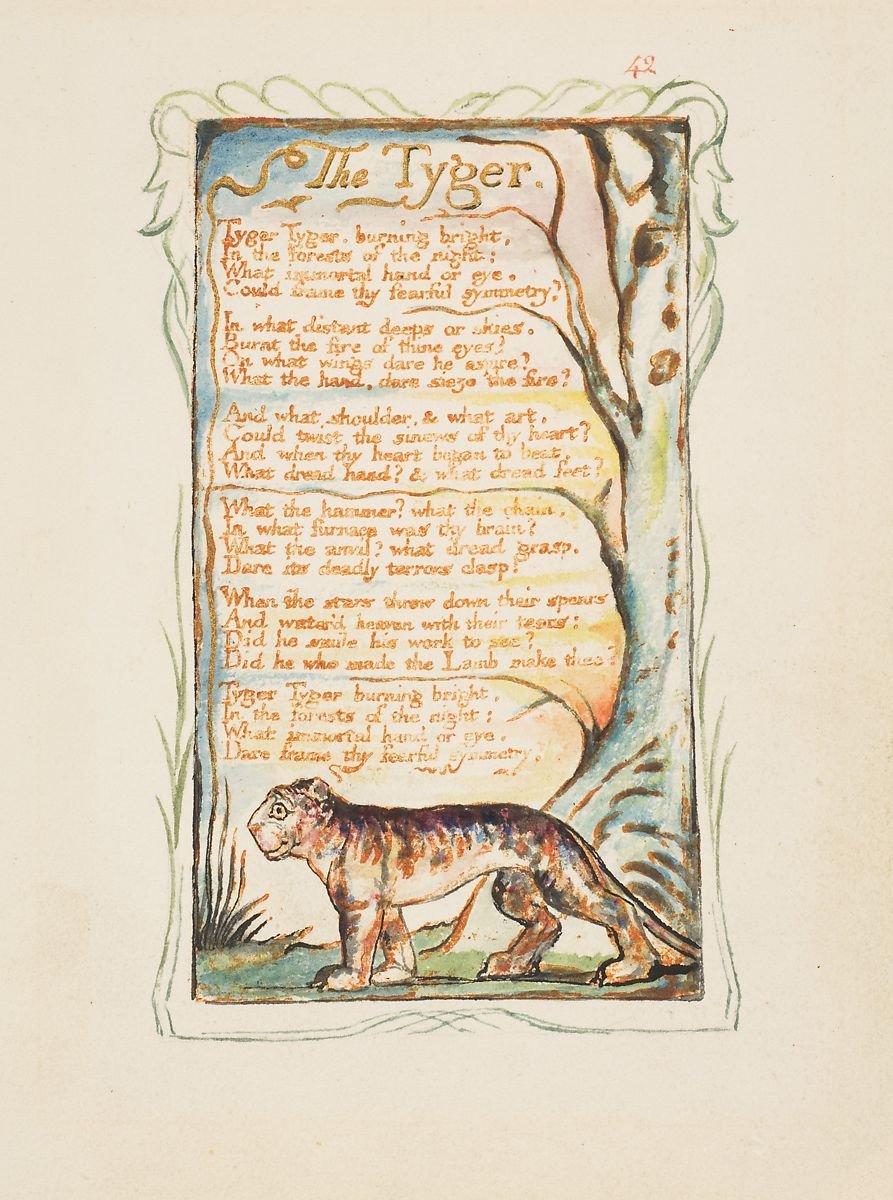Artist Profile: William Blake – Poet, Painter, Printmaker.
The Night of Enitharmon's Joy by William Blake, 1795
One of Britain’s most influential figures, William Blake, a painter, poet and printmaker lived in a time of great opposing views. Labelled by some as a madman when industry and revolution were booming, there was also the need for enlightenment and spiritual awakening within the world.
An influential few, who trusted in Blake’s visions that sought the betterment of the human race, gave him the encouragement to continue with his life’s work.
He achieved many great things, but one that stands out the most was the idea of immortality, as his art and poetry still ring true today, bringing light to the dark and wisdom to a world on the brink of collapse.
“‘A fool sees not the same tree that a wise man sees...If the doors of perception were cleansed everything would appear to man as it is, Infinite.’”
William Blake
Born: 28 November 1757 in Soho, London
Died: 12 August 1827, London
Style: Romanticism, Symbolism
Education: Royal Academy of Arts
William Blake was born in Soho, London in 1757. From an early age, he wanted to be an artist. His family supported and funded his training by enrolling him in classes and his apprenticeship as an engraver as well as buying him tools for his learning.
In 1779 he began training at the Royal Academy of Arts but rejected their style of teaching which encouraged students to imitate Renaissance Art, instead being inspired by Medieval and Gothic styles.
William Blake, The Ancient of Days, 1827
From the age of four, Blake received visions, which continued throughout his life. He claimed to have seen God multiple times as well as forms resembling angels.
His faith in the Divine grew as he became older and it deeply influenced him of a greater force and meaning to life than the physical world we live in.
This theme resonated through much of his work and caused a stir, especially in a time when science and innovation were being used to prove and overtake such spiritual viewpoints.
William Blake The Ghost of the Flea, 1819-1820
Thomas Phillips, The Portrait of William Blake, 1807
From 1784 he ran his own printing business and a few years later in 1788, he invented a new type of printmaking called relief etching. This allowed him to add both colour and text at once which had not been possible to achieve until then. His work as a printmaker sustained his income throughout his life as he was supremely gifted.
Blake began to produce books with radical ideas that covered themes echoing throughout society of the time - revolution, sexuality and the slave trade. Accompanying the text were vivid images that covered these themes and were highly sought after by other artists and collectors, as the colours of the illustrations became more dramatic.
William Blake David Delivered out of Many Waters, 1805
Blake is attributed to the Romantic era. Up until his time, creating art was all about imitating other artists of the Renaissance era, as he was taught in school. Rejecting this and by combining his visions and the concept of divine inspiration, he made way for a new movement, which eventually influenced surrealism.
He had a belief in immorality, especially through activation and by applying one’s creative resources.
As Mark Vernon wrote, in an in-depth essay about the artist and his beliefs:
This sense of his immortality arises with a recognition of the conviction upon which Blake bet his life: the human imagination is not only capable of entertaining fantasy. When coupled to creative skill and penetrating thought, it reveals the truths of existence and life. Mark Vernon for Aeon.
Oberon, Titania and Puck with Fairies Dancing by William Blake, c.1786 from William Shakespeare's Midsummer Night's Dream.
“To see a World in a Grain of Sand
And a Heaven in a Wild Flower
Hold Infinity in the palm of your hand
And Eternity in an hour”
Blake’s critically acclaimed poem Auguries of Innocence is one of the most obvious pieces that carry the Artist’s experiences and concern for the behaviours of the human race. He was especially concerned about society’s mistreatment of people and nature, for if it were to continue he believed there would be harsh realities to face as the poem communicates.
Several artistic failures and talk among his contemporaries that he had gone insane, led Blake to become a recluse around 1809. His wife Catherine Blake, remained loyal by his side and aided in keeping the artist’s spirit alive.
In 1818 he partnered with John Linnel who gave him a sense of renewal to produce work again. It was Linnel and his followers that gave Blake the confidence to create work that spoke passionately on a spiritual level and that resonated and touched audiences. The successors of Blake began to make waves and reference his work, which gave him the recognition and influence he has today on other artists, musicians, poets and the like.
Blake believed that there are bigger mysteries to life and it is encouraged that anyone interested in learning more about his concepts and ideas, read more of his own writing.
“He who binds to himself a joy
Does the winged life destroy
He who kisses the joy as it flies
Lives in eternity’s sunrise.”


